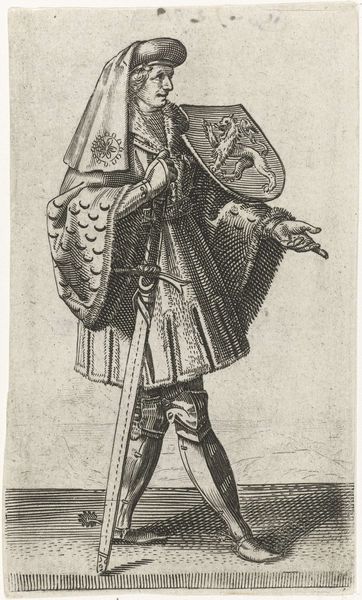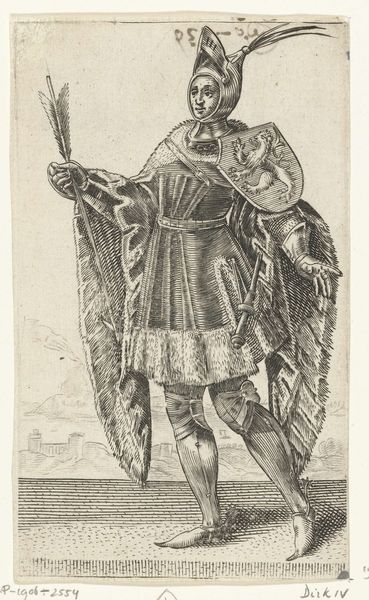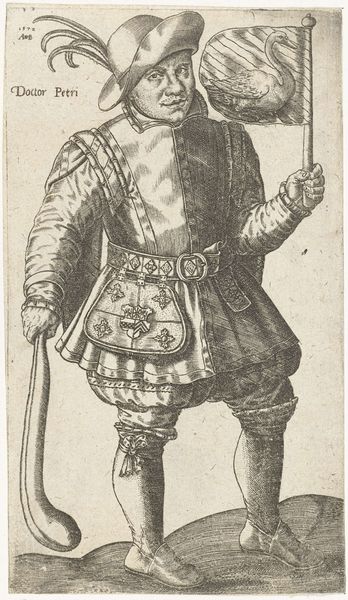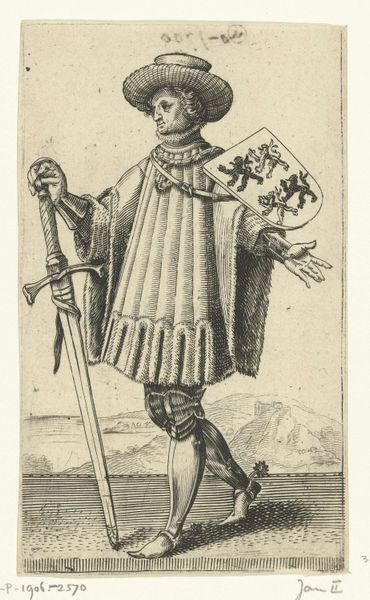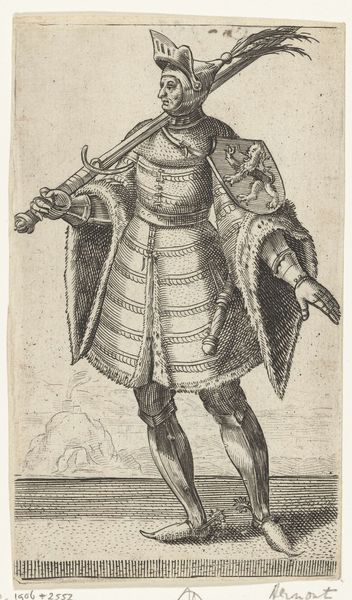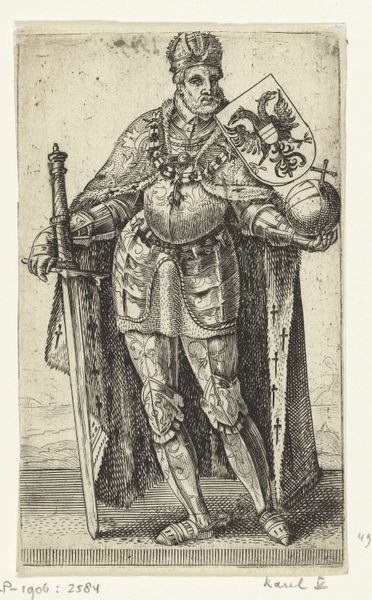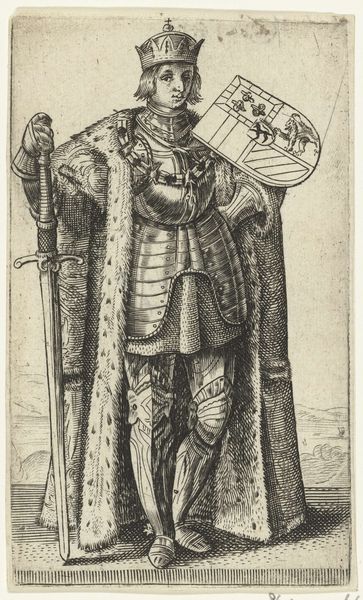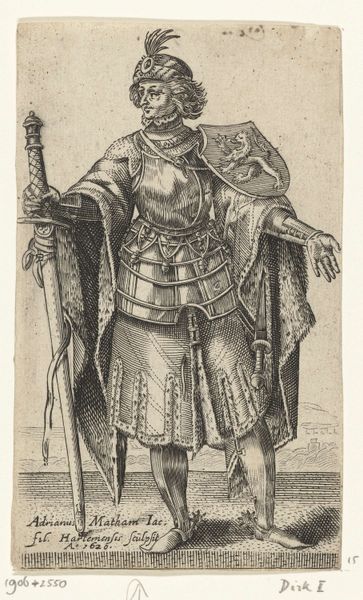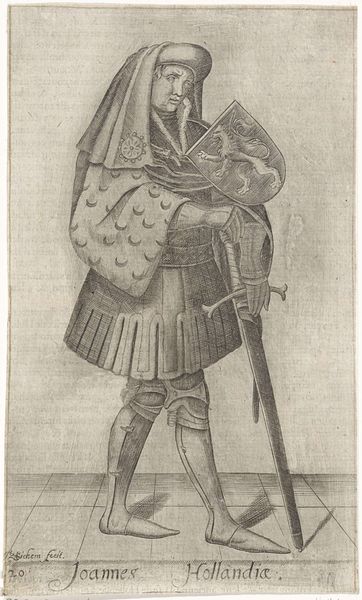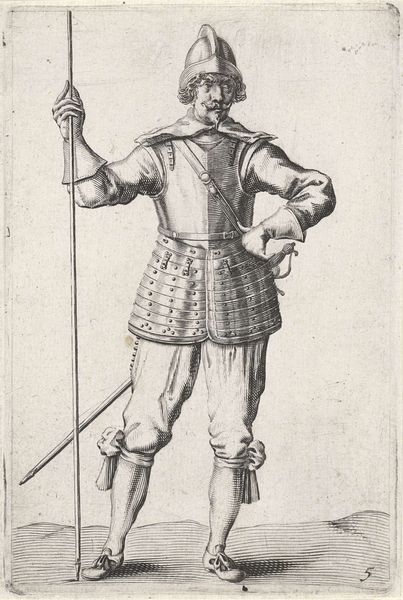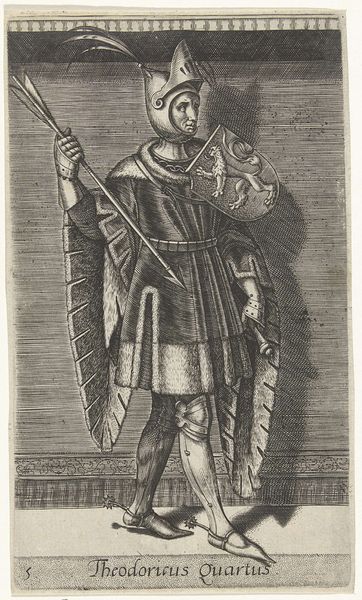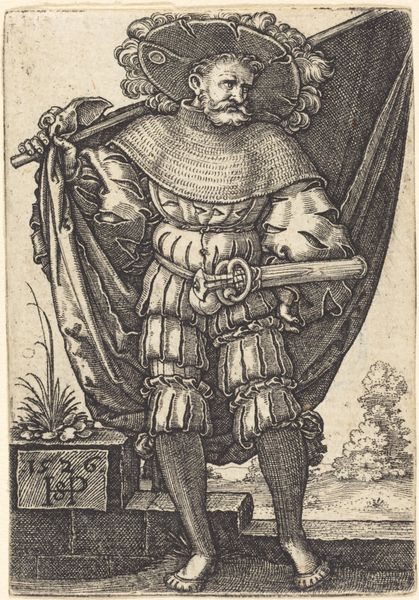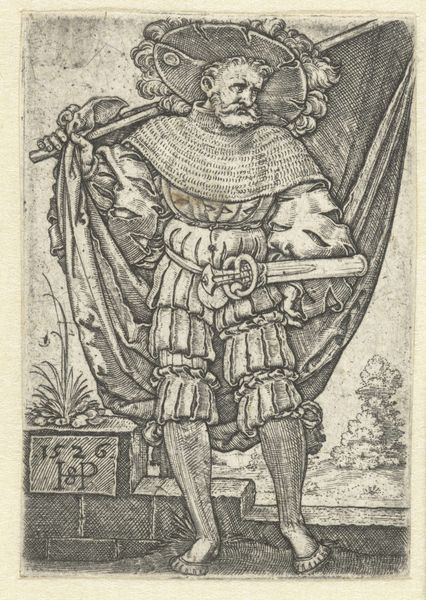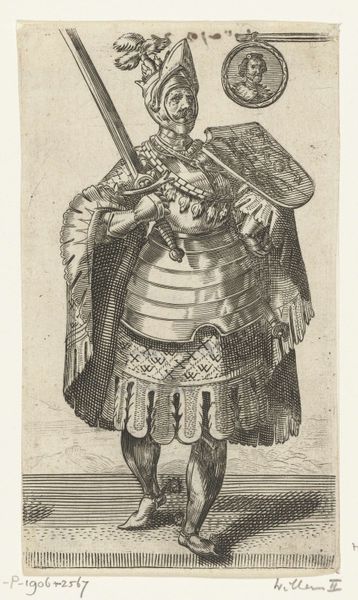
print, metal, engraving
#
portrait
#
medieval
#
baroque
# print
#
metal
#
figuration
#
history-painting
#
engraving
Dimensions: height 130 mm, width 80 mm
Copyright: Rijks Museum: Open Domain
Editor: Here we have Adriaen Matham's "Portret van Karel de Stoute, hertog van Bourgondië," an engraving on metal from 1620. It's fascinating how Matham uses such fine lines to render the Duke's armor and fur-trimmed cloak. How would you interpret this piece from a formalist perspective? Curator: The beauty here, as you’ve rightly noticed, lies in the meticulousness of the line work. Observe how the varying density of hatched lines creates areas of light and shadow, giving volume to the figure and defining the textures. Notice the formal arrangement of elements—the verticality of the figure countered by the horizontal line of the sword, and how the shield functions as a focal point, echoing the intricate designs found throughout the armor. What do these visual contrasts and repetitions suggest to you about the artist's intent? Editor: It's like the details aren't just details. The way the artist contrasts light and dark must add an essential weight to the subject! Curator: Precisely! Matham isn’t simply reproducing an image. He's composing a study of textures, of light, and form. It showcases how an engraver can transform a historical figure into a purely visual experience. Consider the relationship between the detailed rendering of Charles’s attire and the relatively bare background; a decision, I suspect, rooted in formal concerns rather than narrative ones. What meaning do you derive from that? Editor: It isolates the figure, so our eye keeps bouncing around his cloak, his shield, the hat. This directs the viewers to his significance as a nobleman, a heroic icon with detailed features defining who he is? Curator: Exactly! And even deeper than the texture and detail of what comprises him is the negative space surrounding, enhancing his monumental silhouette! That understanding transcends the portrait itself. Editor: It definitely gives me a different view to focus on visual features. I feel a newfound respect for the language and how the work speaks volumes of the era through just these small strokes and visual cues.
Comments
No comments
Be the first to comment and join the conversation on the ultimate creative platform.
